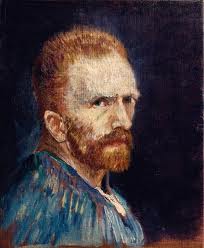Creatively Creating Creativity

I alternate between fantasy and reality.
I recently wrote that Mihaly Csikszentmihalyi, in his book, Creativity: Flow and The Psychology of Discovery and Invention, identified ten different pairs of opposing traits that occur commonly in creative personalities. We looked at three pairs in that post (click here). Let’s look at three more today.
Creative individuals alternate between imagination and fantasy at one end, and a rooted sense of reality at the other. Csikszentmihalyi notes that Albert Einstein believed that both art and science “are two of the greatest forms of escape from reality that humans have devised.” To create new truths — to change the paradigm in Thomas Kuhn‘s phrase — one needs a great imagination, bordering on fantasy. At the same time, the creative person realizes that the fantasy could actually be true. The imagination extends well beyond reality but, sooner or later, reality catches up. Csikszentmihalyi also notes how artists respond to Rorschach tests. Creative artists tend to respond with more original and more detailed stories than “normal” people. But the artists rareley give “bizarre” answers as normal people sometimes do. Csikszentmihalyi concludes, “Normal people are rarely original, but they are sometimes bizarre. Creative people, it seems, are original without being bizarre. The novelty they see is rooted in reality.” Thus, it seems that it’s good to study reality so you can connect it to your imagination. Imagination disconnected from reality is simply bizarre.
Creative people seem to harbor opposite tendencies on the continuum between extroversion and introversion. Being truly creative requires a lot of time alone. You need solitary time to master your domain, to learn how to play the piano, or to write your magnum opus. Yet many of Csikszentmihalyi’s creative people said it was equally important to interact with other people and just kick ideas around. As Freeman Dyson puts it, “Science is a very gregarious business. It is essentially the difference between having this door open and having it shut.”
Creative individuals are also remarkably humble and proud at the same time. Highly creative people understand that they “stand on the shoulders of giants” — they first mastered their domain and then they extended it. Csikszentmihalyi points out that they also understand the role of luck in their discoveries and that they’re more focused on future work, making past work seem less boast worthy. At the same time, creative individuals realize that they have indeed created new forms and structures that genuinely make them proud. Csikszentmihalyi sees this duality as the contrast between competition and cooperation. To change your field (or to change the world), you need to be aggressive. “Yet at the same time, [creative individuals] are often willing to subordinate their own personal comfort and advancement to the success of whatever project they are working on.”
Click here for Csikszentmihalyi’s book. By the way, his surname is pronounced Six-Cent-Mihaly.
2 Responses to Creatively Creating Creativity
-
Pingback: More Creative Creativity | Travis White Communications
-
Pingback: What Makes You Creative? | Travis White Communications